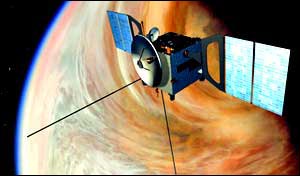The European Space Agency ESA has given the final approval to launch a spacecraft to Venus

The European Space Agency ESA has given the final approval to launch a spacecraft to Venus. The second planet from Earth and similar in size is permanently covered by a thick atmosphere. The temperature on its surface is sufficient to melt lead. The Venus Express spacecraft will use the same technologies and a more or less similar structure to the Mars Express that will be launched next year to Mars. Astronomers seek to understand the differences in development between the two planets. Venus Express will be ready for launch in 2005.
The decision to launch the spacecraft to Venus has risen and fallen several times in the last two years. The idea behind the operation began in 2001. As a result of a call she published, many ideas came from scientists across Europe. Venus Express was finally chosen due to its great scientific value.
However, earlier this year, the project was delayed due to the need for additional studies. In July it was approved again but one country, Italy failed to confirm its participation until October. Finally, Italy was unable to find financing and it was necessary to find ways to make the spacecraft cheaper. This week, the scientific director of the European Space Agency, David Southwood, announced that the parties managed to find a compromise that would allow the launch of the spacecraft to Venus.
Venus is a twin planet to Earth in terms of size and mass, but it has evolved in a completely different direction, where the temperature reaches 500 degrees Celsius and the atmosphere is a mixture of toxic gases. The Venus Express spacecraft will explore Nega for the first time using radar systems that will scan the surface.
All the instruments on the spacecraft are replacements for the Mars Express and Rosetta spacecraft - the spacecraft that is supposed to track comets and which will be launched in January 2003.
